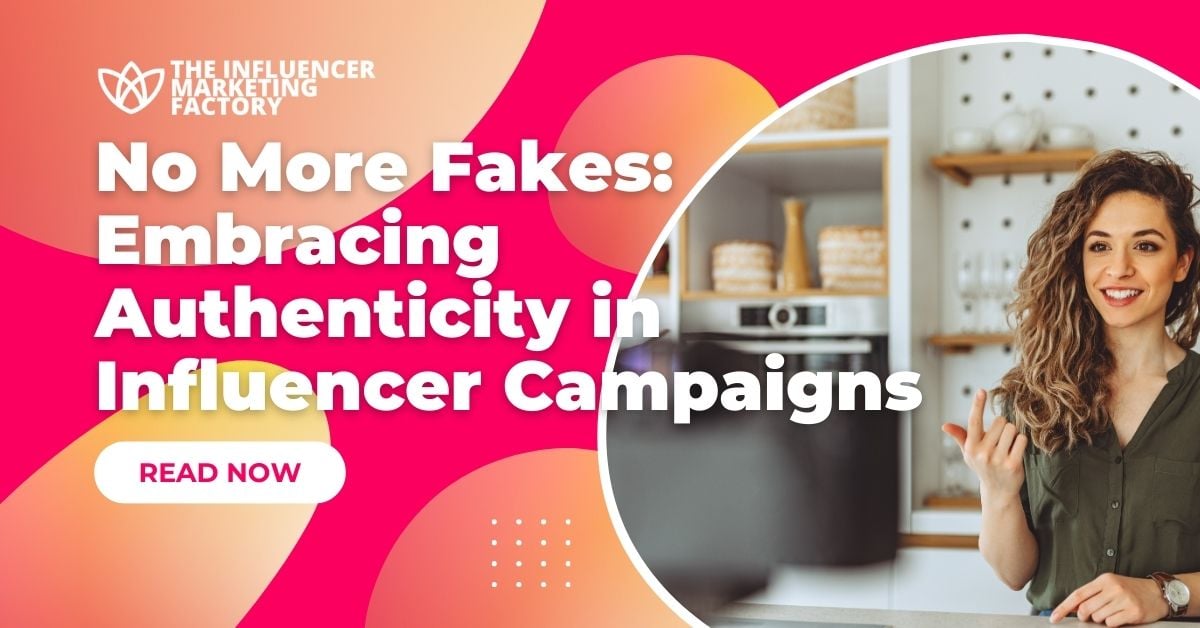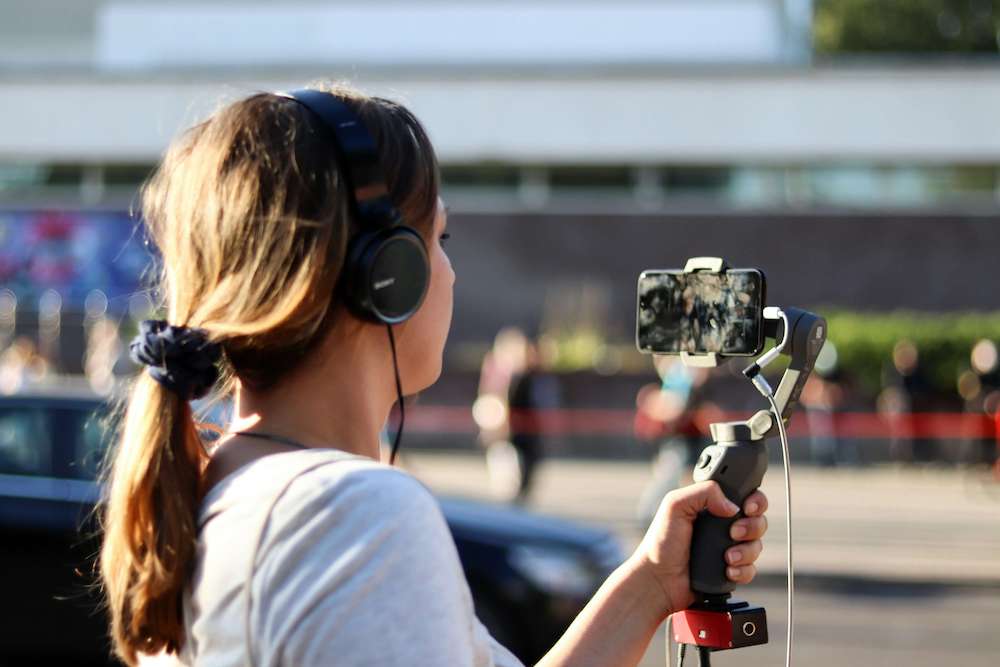
22 Apr 3 Reasons Why Authenticity is Critical for Influencer Marketing
Summary
You know that one friend that is great at telling stories and everybody is captivated to find out more?
And then you know that one friend who’s story is so theatrical or artificial that you know their story can’t be true?
Through influencer marketing, the aim is to be that trustworthy storyteller, and not the one who everyone may be entertained by, but simply does not believe.
Authenticity has become a popular term in influencer marketing, and while it may seem overused, it remains crucial for successful campaigns.
Scott Disick, the ex-husband of Kourtney Kardashian, who gained notoriety when he was caught copying and pasting the brand’s precise marketing instructions in his caption. For the uninitiated, accordingly The Skimm, he simply copy pasted the prequel to his caption, “At 4pm est, write the below’ – Part of an Instagram caption that Scott Disick posted straight into his caption, which needless to say, went viral and showcased all the problems of inadequately carried out influencer marketing.
This prompted brands like Lululemon and Samsung to shift their focus towards collaborating with micro-influencers, who genuinely share common interests with the brands and prompt higher engagement, all owing to their authenticity.
Other examples of blatant fails include the likes of David Beckham agreeing to be the face of eMotorola’s Aura phone, but failing at promoting it aptly and saying “When you hold it, it feels like you have something really special in your hand.” – while holding an iPhone. Examples like these bring to the forefront the “be true to yourself”, or simply “be yourself” mantra that everyone voices to others in a me-too social media world, authenticity it truly is that secret sauce that separates dynamic influencer campaigns from average or boring ones, or funny ones.
Here are three reasons why authenticity in influencer marketing is key to campaigns.
A consistent, familiar and almost predictable voice
Why do people tune into something, repeatedly, and often continually? Because psychologically they are wired to know what’s coming next.
The same applies to a creator or influencer who is voicing their opinions, creativity, and tone of voice to their audience. Creator’s audiences have become accustomed to not only what they like to say but also how they like to say it. When a creator’s voice changes from what their audience is used to hearing, it is fairly obvious.
The decision for audiences to follow a creator holds significant psychological value, resulting in audiences caring about the recommendations made by the creator. Over time, the familiarity becomes predictable, where it seems almost obvious, and alluring, when a creator works with a series of brands.
When it comes to shopping / e-commerce, consumers will always have greater trust in someone who it feels belongs to their personal circle, and it’s undeniable that a brand cannot establish the same level of connection as an individual who embodies this feeling.
When it comes to branded collaborations, it is the fit with the brand that can make or break an influencer marketing campaign. When brands are too prescriptive with what a creator says or how they go about doing so, it can easily derail an influencer from their norm. This is why it’s key to try to invite the influencer into the planning stage of a campaign, as well as when discussing brand integrations, to ensure the brand fits with their rhythmic, consistent pattern.
Delivering detailed and nuanced descriptions
When a creator expresses their adoration for a product solely based on a generic “insert benefit here” way of sharing, it is inevitably artificial.
Personalizing their liking for a brand or product enables the creator to add more details and nuances, which not only benefits the brand, but forces the creator to be more authentic to themself. Ultimately, if the product genuinely resonates with the influencer and aligns with their values, their audience will instinctively comprehend why they chose it, as they already possess an understanding of how it integrates into their daily life.
In marketing terms, this means that brands must encourage creators to discuss specific details that hold significance for the creators and their audience, rather than focusing solely on what the brand deems important for their general audience.
This lends itself well to livestreams, predicted to be at $57 billion by 2025. In this set up, in a non-prompted, non-scripted and non-rehearsed format, influencers have to be true to themselves and provide details of what they are sharing. Disparate from the popular video formats, the fact that these are LIVE put authenticity and detailing on the forefront, where, akin to a traditional QVC styled salesperson, the conviction has to be truly engaging and authentic. “This format, influencers engage in unscripted and unrehearsed discussions, where authenticity and attention to detail take center stage,” quips Adi Ronen, CEO of buywith.
Platforms like buywith, which have partnered with beauty retailers like Ulta and with all-purpose retailers like Walmart, further acknowledge that having authentic, and informed hosts who are able to drive conversion is what makes live commerce a successful platform. Co-founder Adi Ronen states that “in this format, influencers engage in unscripted and unrehearsed discussions, where authenticity and attention to detail take center stage.”
Don’t sell; Educate
People want to learn, not be ‘sold‘ to. While the content may be sponsored, audiences are not seeking or desiring another product pitch. Content that solely aims to sell a product is less likely to engage an influencer’s audience, as it lacks authenticity. Instead, connecting with the audience on an emotional level will spark their interest in discovering more about the brand.
Embracing the growing trend of organic storytelling methods, such as livestreams and longer videos on social platforms that are favoring long form storytelling, these allow for spontaneous and genuine interactions. For example, unboxing a package in a live session adds a fun element to product promotion, or going into detail about hacks of using a product helps audiences as it is truly unrehearsed and authentically ‘in the moment’.
By utilizing these channels, influencers can maintain a candid and unscripted nature to their storytelling, enhancing their organic appeal. This makes it similar to user generated content (UGC), which resonates with Gen Alpha because “this group of consumers inherently mistrusts big-name social media influencers, recognizing that these internet celebrities are paid big bucks to promote products; user-generated content, on the other hand, fares better because Gen Alpha perceives this information as authentic,” as stated by marketing leader and retail marketing expert Sourabh Sharma in the Gen Alpha report.
Ultimately, it is important to remember that influencers often consider their social feed as a form of artistic expression, so creative freedom is key for brands to lend to their influencers. As we stated in our Top 100 Live Commerce Influencers Report, brands need to ensure influencers align with their brand when choosing which influencers to work with, while influencers need to remain credible when giving their reviews or opinion about the brand and its products.
Author bio: Kaya Zabriskie is leading influencer marketing for buywith, a leading live shopping and viideo commerce solution.
Kickstart you influencer journey now
Partner with The Influencer Marketing Factory to leverage our extensive network of premium influencers. Streamline your campaign management from inception to conclusion, and attract your desired audience with compelling and engaging content.


